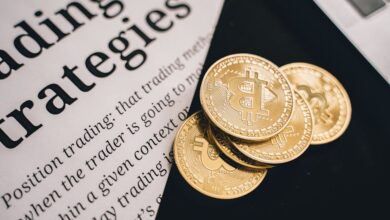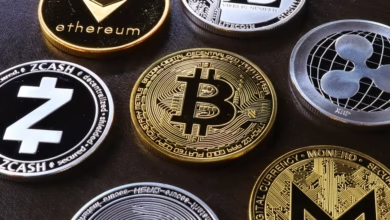Navigating the Gold Market: A Complete Guide to Investing in Physical Gold Bars, Coins, and Jewelry

In an ever-changing economic landscape, physical gold has emerged as a time-honored safe haven asset, attracting both seasoned investors and newcomers alike. Whether you're considering gold bars, coins, or exquisite gold jewelry, understanding the nuances of gold investment is essential for making informed decisions. This comprehensive guide will delve into the various forms of physical gold, explore current gold market trends, and highlight the factors that influence gold prices, including the role of central banks and global gold demand.
As inflation concerns loom and economic uncertainties persist, the allure of gold as a secure investment grows stronger. With gold mining and refining practices evolving, sustainable gold options are becoming increasingly relevant. This article will provide insights into buying, storing, and protecting your gold assets, ensuring that you can navigate the complexities of the gold trade effectively. From evaluating gold collectibles to understanding the impact of gold ETFs and futures on your investment strategy, we will equip you with the knowledge needed to thrive in today's gold market. Join us as we uncover the intricacies of physical gold investment and help you secure your financial future.
- 1. Understanding Physical Gold: A Comprehensive Guide to Gold Bars, Coins, and Jewelry Investment
- 2. The Gold Market Trends: How Gold Prices and Central Banks Influence Your Investment Choices
- 3. Safe Haven Asset: Strategies for Buying, Storing, and Protecting Your Gold Investment in Today's Economy
1. Understanding Physical Gold: A Comprehensive Guide to Gold Bars, Coins, and Jewelry Investment
Investing in physical gold has long been regarded as a secure way to preserve wealth and hedge against economic uncertainties. Understanding the various forms of physical gold—such as gold bars, coins, and jewelry—can empower investors to make informed decisions in the gold market.
Gold bars are typically available in various weights and purities, making them an attractive option for large-scale investments. They are often produced by reputable mints and come with certificates of authenticity, reflecting their gold reserves. As a safe haven asset, gold bars tend to hold their value even during economic downturns, which is why many investors consider them a cornerstone of their gold investment strategy.
Gold coins, on the other hand, combine aesthetics with investment potential. Collectible coins can appreciate in value due to their rarity and historical significance, while bullion coins are primarily valued based on their gold content. Investors should stay attuned to gold market trends when considering gold coins investing, as fluctuations in gold prices can directly impact the value of these collectibles.
Gold jewelry, while often seen as a luxury item, can also serve as an investment. The value of gold jewelry is influenced by market prices, craftsmanship, and design. However, it's essential to recognize that the resale value of jewelry may not reflect the initial purchase price, as retail markup can be significant. Understanding gold recycling can be beneficial for those looking to liquefy their investment in gold jewelry.
With the rise of gold technology, innovations in gold mining and refining processes are making sustainable gold mining practices more accessible. This shift not only addresses environmental concerns but also appeals to investors interested in ethical investing. Additionally, central banks are increasingly adding gold to their reserves, reinforcing its status as a critical asset in the global financial system.
As global gold demand continues to grow, particularly in emerging markets, investors are also exploring alternative gold investment vehicles, such as gold ETFs and gold futures. These financial instruments provide exposure to gold prices without the need for physical storage. However, for those who prefer tangible assets, understanding the nuances of the gold trade, including issues like gold smuggling, is crucial.
In light of current economic conditions, including inflationary pressures, many investors are turning to physical gold as a hedge against currency devaluation. The relationship between gold and cryptocurrency is also evolving, with discussions surrounding gold's role in a diversified portfolio that includes digital assets.
In summary, exploring the world of physical gold, whether through bars, coins, or jewelry, presents an array of opportunities for savvy investors. By considering factors such as gold production, market analysis, and evolving technology, individuals can strategically navigate the gold landscape to enhance their investment portfolios.
References:
– World Gold Council. (2023). Gold Demand Trends Q2 2023. Retrieved from https://www.gold.org/goldhub/research/gold-demand-trends
– Kitco News. (2023). Gold Prices Forecast: What to Expect in 2024. Retrieved from https://www.kitco.com/news/gold-prices-forecast
– International Monetary Fund. (2023). Gold and Inflation: A Comprehensive Study. Retrieved from https://www.imf.org/en/Publications/WP/Issues/2023/07/01/Gold-and-Inflation-508456
2. The Gold Market Trends: How Gold Prices and Central Banks Influence Your Investment Choices
The gold market is influenced by various factors, including global economic conditions, central bank policies, and market demand. Understanding these trends is crucial for anyone considering a gold investment, whether in the form of gold bars, coins, or jewelry.
Gold prices are often viewed as a reflection of economic stability and inflation. When inflation rises or economies face uncertainty, gold is considered a safe haven asset. Investors flock to physical gold, driving up its value. In recent years, the relationship between gold and inflation has become increasingly relevant, as many individuals seek to protect their wealth against rising prices. The gold standard, although no longer used, still influences perceptions of gold's value as a reliable store of wealth.
Central banks play a pivotal role in shaping gold market trends. Many central banks hold significant gold reserves as part of their monetary policy. For instance, when central banks, particularly in emerging markets, increase their gold holdings, it can create upward pressure on gold prices. This trend indicates a positive outlook for gold investment and encourages private investors to consider adding gold bullion or gold coins to their portfolios.
Additionally, the global gold demand is affected by various sectors, including jewelry, technology, and investment products like gold ETFs and gold futures. As technology evolves, new applications for gold emerge, further driving demand. Moreover, sustainable gold mining practices are gaining traction, appealing to environmentally conscious investors. As consumers increasingly prioritize ethical sourcing, gold recycling has also become a viable option, contributing to a more sustainable gold trade.
The rise of gold and cryptocurrency has introduced new dynamics to the gold market analysis. While cryptocurrencies have garnered attention for their potential as alternative investments, gold remains a time-tested asset. The ongoing comparison between gold and cryptocurrency may influence future investment decisions, making it essential for investors to stay informed about the shifting landscape.
In conclusion, understanding gold market trends is vital for making informed investment choices. With the interplay of central banks, global demand, and evolving technologies, the gold market continues to be a dynamic environment for investors seeking to diversify their portfolios with physical gold, whether it be gold bars, coins, or luxury gold jewelry. Staying abreast of these factors will help you navigate your gold investment journey effectively.
3. Safe Haven Asset: Strategies for Buying, Storing, and Protecting Your Gold Investment in Today's Economy
In today's economy, many investors view physical gold as a safe haven asset, particularly in times of economic uncertainty and inflation. With fluctuating gold prices, it’s essential to adopt effective strategies for buying, storing, and protecting your gold investment.
When considering a gold investment, start by analyzing gold market trends and understanding the current global gold demand. This includes tracking gold prices and assessing the performance of gold futures and gold ETFs, which can provide insight into market movements. Investors should also be aware of luxury gold items, such as gold jewelry and collectibles, which can serve as both aesthetic and financial assets.
Once you've made your purchase, whether it's gold bars, coins, or jewelry, secure storage is crucial. Many investors opt for safety deposit boxes in banks, which not only provide security but also protect against theft and fluctuations in gold production. Alternatively, consider specialized vaulting services that offer high-security storage for physical gold. Additionally, maintaining an inventory of your gold reserves is vital for insurance purposes and to ensure you are aware of your holdings.
To protect your investment further, stay informed about gold recycling and refining processes, as these can impact the availability and value of gold in the market. Also, be cautious of potential risks such as gold smuggling or counterfeit products; always purchase from reputable dealers and verify the authenticity of your gold coins and bullion.
As central banks continue to accumulate gold, the asset's perception as a hedge against inflation and a stable investment grows stronger. By understanding the intricacies of the gold market and implementing these strategies, you can safeguard your physical gold investment effectively, allowing it to flourish even amidst economic challenges.
In conclusion, investing in physical gold—whether through gold bars, coins, or jewelry—offers a unique opportunity to secure your wealth in an ever-evolving economic landscape. As we've explored, understanding the dynamics of the gold market trends and the influence of central banks on gold prices is essential for making informed investment decisions. Physical gold stands out as a safe haven asset, particularly in times of economic uncertainty and inflation, making it a reliable choice for diversifying your portfolio.
Moreover, with the rise of gold technology and sustainable gold mining practices, investors can now engage with this precious metal in a more responsible manner. Whether you are considering gold collectibles or luxury gold items, it's important to stay informed about gold production and refining processes to ensure the authenticity and value of your investment.
As global gold demand continues to rise, and with the ongoing discussions surrounding gold and cryptocurrency, there are ample opportunities to explore innovative ways to invest in gold, including gold ETFs and futures. Ultimately, whether you are a seasoned investor or just starting, understanding the nuances of the gold market, including gold recycling and the threats of gold smuggling, will empower you to make strategic decisions that align with your financial goals. By taking these factors into account, you can effectively navigate the complexities of gold investing and secure a tangible asset that has stood the test of time.
References:
[Include relevant references here]




